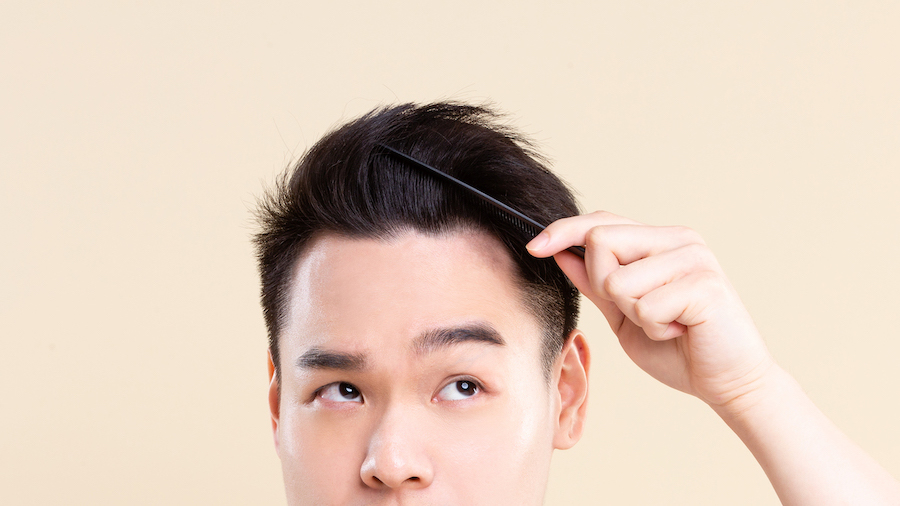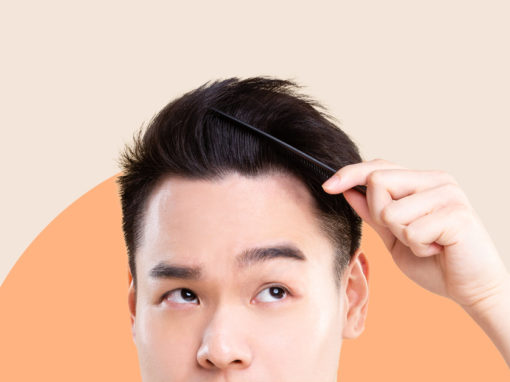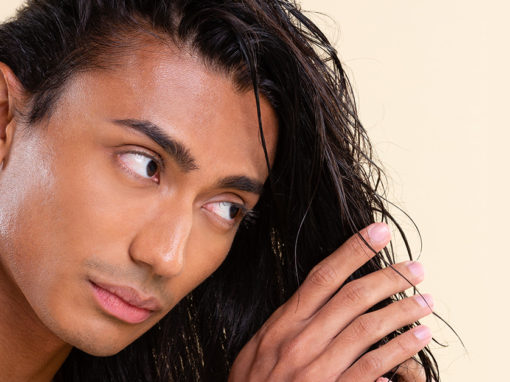A man’s hair type is just as important as his haircut when aiming towards a specific style. Hair types are typically categorised based on texture and thickness.
To achieve a healthy mane, the first step is to know your hair type to learn how to care for it properly. Today’s article aims to give more insight into hair types in men. So, without further ado, let’s get started!
What does hair type mean?
Genetics determine the growth pattern of men’s hair. Each man’s hair can be categorised in two ways, by texture and thickness.
Fundamentally, hair type by texture can be straight hair, wavy hair, curly hair or coily hair. On the other hand, hair type by thickness can encompass thin hair, normal hair or thick hair.
Why do men’s hair texture differ?
A person’s hair texture is essentially determined by the shape of their hair follicles and hair shaft, which are determined by their genes, along with so many other things about their appearance.
Genetics predominantly determines whether your hair is straight, wavy, curly or coily. Several genes that determine the shape and texture of hair have been identified over the decades.
For example, variations in the gene TCHH may affect hair texture among people with northern European ancestry, while variations in the genes EDAR and FGFR2 may affect hair thickness among Asians.
The bottom line remains that your heredity and genes influence the physical structure of your hair, including the hair follicles (the pores from which your hair grows) and the hair shaft.
Each hair on your head is made up of cells that are divided into several layers.
The keratin proteins that form the cortex of your hair are the most crucial part. It consists of a structure that contains dead, overlapping cells that surround the living cells that make up the keratin matrix.
Cell layers make up the cortical layer of your hair, which controls its texture, shape and appearance, as well as its strength and feel. As a result, different people’s hair can be straight, curly, wavy, or coily.
The outer thickness and cuticle structure of your hair can also affect its strength and feel. Some individuals have fine hair that is small in diameter, while others have thick hair that is large in size.
Additionally, the environment and habits also play a role in your hair’s overall texture and appearance.
Finally, hair treatments such as bleaching chemicals or straightening it by use of heat can also affect the texture of the hair.
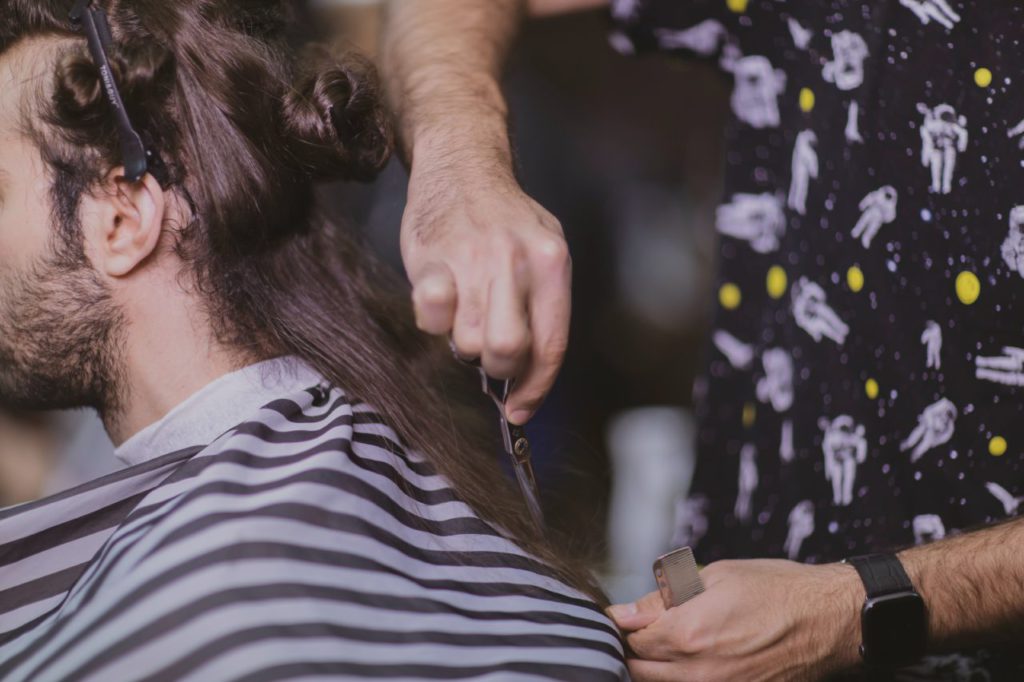
What are the four types of hair in men based on the texture?
As mentioned earlier, there are four types of hair based on texture- straight hair, wavy hair, curly hair and coily hair.
There are many approaches to classifying hair, but the most commonly used one is the Andre Walker Hair Typing System, which we’ll use in this article. Additionally, we’ll explore the subclassifications for each category
Type 1- Straight hair
Type 1 hair is straight and often gets shiny or greasy. This is partly because oils from the scalp travel down the hair follicle quicker.
The subclassifications of straight hair are 1A, 1B, and 1C. A higher letter indicates a thicker, larger hair type, with coarser hair follicles and larger hair diameters. In type 1A hair, the texture is fine, with a straight appearance.
On the other hand, in type 1B hair, the texture is straight, but with some bends. In type 1C hair, the texture is straight, but it exhibits a slightly coarse appearance.
Type 2- Wavy hair
Next in line is Type 2 hair. This hair type has a subtle wave and is usually thicker than straight hair.
Type 2 hair also has three subclassifications- 2A, 2B and 2C.
At its most basic, type 2A hair is wavy and fine, with a narrow diameter. The type 2B hair is also wavy, however, it has a more defined S shape, while type 2C hair is wavy too but has a clearly defined S shape.
Type 3- Curly hair
Curly and wavy are sometimes used interchangeably, but curly is really ultra-wavy. Type 3 hair is usually full of springy curls that are easier to style. It also has three subclassifications, just like the others, 3A, 3B, and 3C.
Type 3A hair grows loosely, with a flowing curly pattern. Type 3B hair is curled tightly and is springy, while type 3C hair has an S-shaped or Z-shaped curl that straightens when pulled on but jumps back to its natural form when released.
Type 4- Kinky (coily) hair
Type 4 is the curliest and kinkiest hair, typically with the coarsest texture. Because each strand of hair tends to form a tight curl with a zig-zag pattern, this hair is frequently referred to as coily hair.
As with the previous three types, it has three subclassifications. 4A, 4B and 4C.
Type 4A hair has medium-sized coils that are loosely packed. The type 4B zig-zag pattern is the most densely packed, with the most restricted zig-zag pattern. Type 4C hair has the tightest zig-zag pattern.
What are men’s hair types based on thickness?
Thickness is another form of hair classification in men. Here, there are three types- thin hair, normal hair and thick hair.
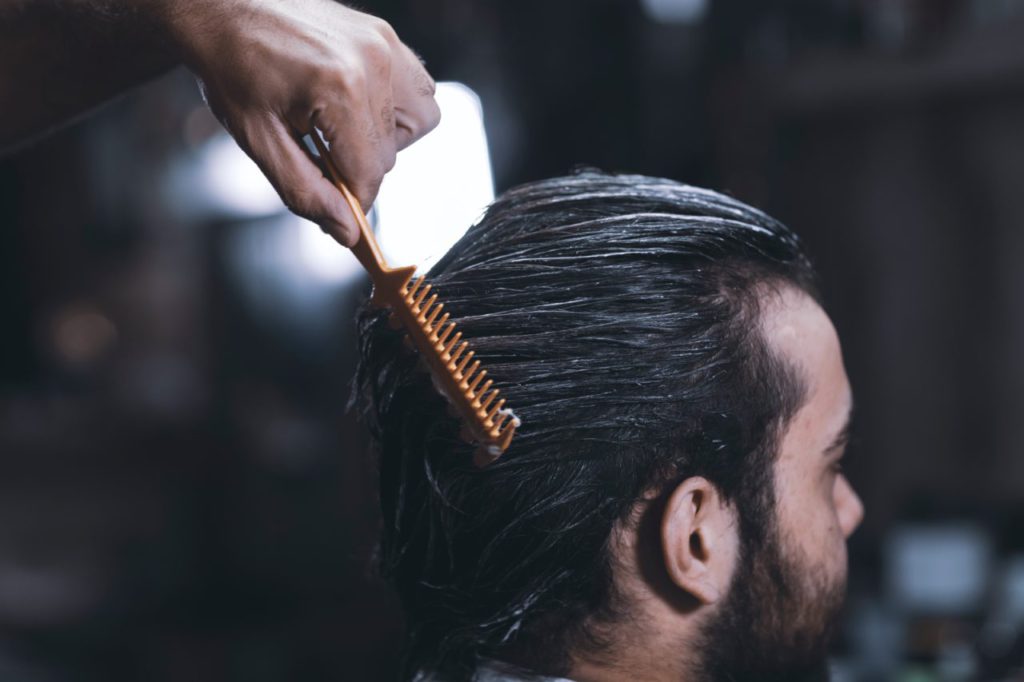
Thin hair type
The thin hair can be recognised by seeing the scalp through the hair. The hair strands themselves are very thin, and new hair grows sparsely. Hair texture and volume are also usually low.
Normal hair type
Normal hair looks generally acceptable. When your hair is pulled back with your hand, the scalp is visible but isn’t when the hair is left alone. The follicles are typically of a decent thickness and are clustered tightly together, giving a nice, full look.
Thick hair type
A thick head of hair is identified by the fact that you can barely see the scalp through it. The follicle diameter is quite large in thick hair, and the follicle groupings are tight. The hair has a highly textured appearance at all times, but can also be difficult to dry off and comb.
How do I know which hair type I have?
Knowing not just your hair category but also your subcategory is core to getting the most value for money when spending on styling and hair care products. The best way usually to know your hair type is to ask your barber or stylist for their professional opinion.
Their daily exposure to various hair textures and types will likely give them a good idea of your hair’s type. Your hair will definitely fall into one of the categories we touched on earlier.
How to care for different hair types?
Each hair type requires a different care routine as the underlying structural characteristics differ.
Caring for straight hair
The most essential thing to remember when dealing with straight hair types is to avoid applying thick, creamy products, as the hair is naturally oily. If you’re closer to 1C than 1A, you may be able to get away with utilising some creamier products.
You’ll want to shampoo regularly to get rid of buildup. Using dry shampoo is an excellent way to keep your hair clean without having to shower frequently.
Caring for wavy hair
If you have 2A hair, loose, thin waves can get weighed down by creamy products, leading to a flat, weighed-down appearance. Instead, try mousses or gels, which are usually lighter in weight.
For 2B and 2C hair that’s thicker and more defined, use oils and moisturisers to keep your natural curl pattern from disappearing. Look out for “anti-humidity” or “anti-humectant” on the label if you have 2C hair.
Caring for curly hair
The most significant thing to keep in mind about type 3 hair is that you should never brush it. Unfortunately, brushing out your curls will certainly create frizz. Comb it out while you are in the shower with conditioner in it rather than brushing it out.
Brushing may put stress on your hair, which not only loosens your curls but may also cause alopecia if worn daily.
Additionally, be sure to avoid silicone and sulphate sulfates, which may damage your hair over time. After shampooing and conditioning your hair too often. Consider applying a leave-in conditioner and then comb out tangles using your fingers.
Caring for kinky hair
Coily-haired people should ensure to maintain moisture, but they should also use gentler products to avoid damage. Always follow up a shampoo with a leave-in conditioner, and don’t skimp on the conditioner when in the shower. On days you don’t wash your hair, use oils, creams, or deep conditioners to keep it hydrated.
Co-washing, ideally using a natural conditioner, is beneficial if you have 4B or 4C hair. Shampoo does just as good of a job as conditioner without stripping your hair of its oil. You also should avoid using more sophisticated items and stick to using natural oils (like coconut oil or shea butter) since this hair is more sensitive to damaging additives than any other type.
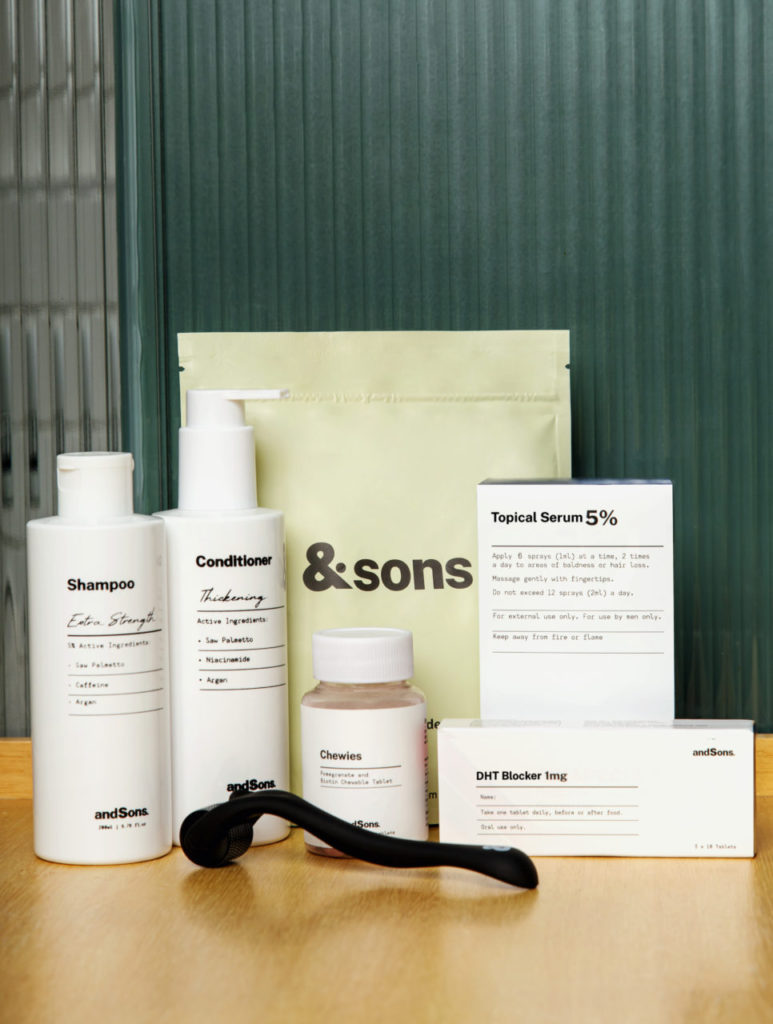
How to choose a hair product suitable for your hair?
There are two major factors to consider while choosing the right products for your hair—the type of hair and issues that need resolving. Different hair types require different products for proper care.
For example, thin hair texture may need products that provide a thickening effect, like andSons Malaysia’s ‘Thickening Shampoo’ with Saw Palmetto and ‘Thickening Conditioner’ with Niacinamide.
Similarly, products like andSons Malaysia’s hair loss prescription kit and non-prescription kit can be helpful in fighting hair loss in men. Other than that, edible products like collagen powder can boost healthy hair growth, irrespective of the texture and type of hair in men.
This article is for informational purposes only and does not constitute medical advice. The information contained herein is not a substitute for and should never be relied upon for professional medical advice.
Book a consultation with andSons Malaysia’s medical team to learn more about hair loss conditions and available treatments here.
